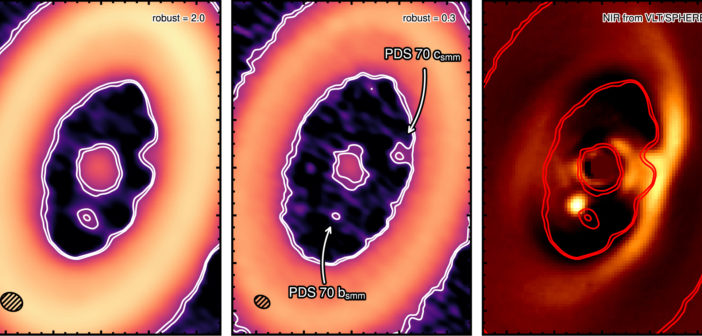The panels above show 10” x 14” images of dust emission from the disk that surrounds the young star PDS 70, captured with the Atacama Large Millimeter/submillimeter Array (ALMA). See that purple blob of emission on the inside-right of the disk in the center panel? According to a new study led by Andrea Isella (Rice University), that’s dust emission from what is likely a circumplanetary disk — a disk of gas and dust surrounding the newly forming giant planet PDS 70c, feeding its growth and possibly providing the material that will later form into one or more moons around the planet.
The PDS 70 system made headlines last year when its first planet, PDS 70b, was directly imaged (you can see it best in the background VLT/SPHERE image in the right panel).
In the grand scheme of a giant planet’s lifetime, the period of time when it is still surrounded by a circumplanetary disk is short, so PDS 70 system is one of the few instances where we’ve managed to capture this moment. By studying PDS 70, we hope to learn more about how gas giants — like our own Jupiter or Saturn — and their moon systems form. To learn more, check out the article below.
Citation
“Detection of Continuum Submillimeter Emission Associated with Candidate Protoplanets,” Andrea Isella et al 2019 ApJL 879 L25. doi:10.3847/2041-8213/ab2a12

